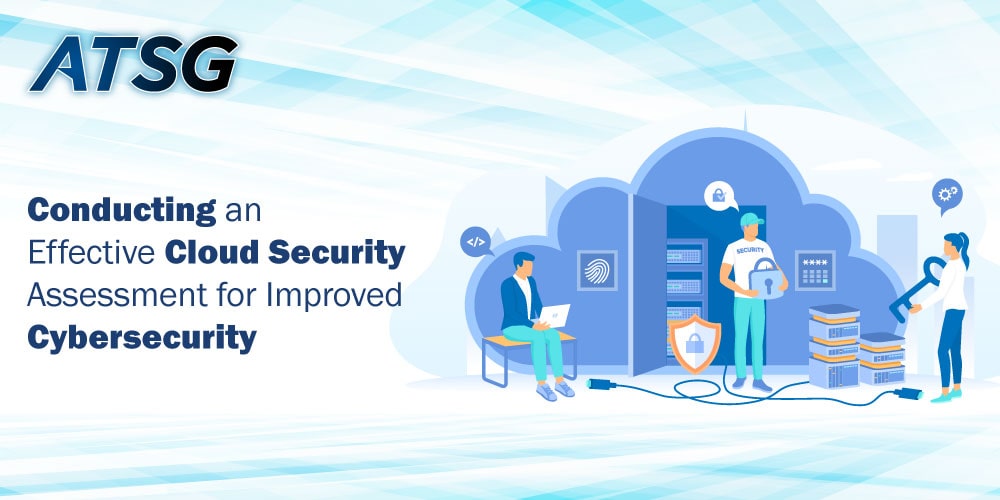Cloud computing is now widely acknowledged to provide greater data accessibility and control than on-premise solutions. However, to take full advantage of cloud technologies, it is important to consider cloud security and assess it. Developing a cloud security assessment checklist aims to provide the essential steps needed to be taken to evaluate and achieve adequate security for the cloud environment.

What is Cloud Security Assessment?
A cloud security assessment evaluates the security of a cloud computing infrastructure, services, applications and data, to identify potential risks and vulnerabilities. It involves using various security testing methods and tools to assess the security posture of cloud systems, and determine if the security controls protect effectively against cybersecurity threats.
Internal security teams or third-party security providers can conduct cloud security assessments. These assessments can be done on a one-time basis, or as part of an ongoing monitoring and testing program, to ensure the continuous security of cloud systems. A recurring approach is more effective, as the cybersecurity landscape is rapidly evolving these days.
Why do Organizations Need Cloud Security Assessments?
Cloud computing offers your organization significant operational efficiencies, especially when compared to traditional servers. However, moving to, and working on the cloud also necessitates a thorough assessment of any cybersecurity related challenges.
Therefore, the ill-planned adoption of cloud-based solutions may pose security risks at some point. The situation gets even more challenging if the deploying enterprise lacks in-house cybersecurity capabilities.
The cloud environment requires more advanced security measures that provide anytime and anywhere protection. With the increasing sophistication of cyber attacks, and a larger attack surface, cloud security assessment has become an essential part of an organization’s cloud environment.
The Steps for Conducting a Cloud Security Assessment
Cloud security assessment commences from gathering details about the cloud provider, or third-party vendor that is associated with the organization’s security solution and configuration. By following certain steps, organizations can ensure a seamless and effective process, pin-pointing any security gaps or vulnerabilities that may exist in the cloud infrastructure.
Here are some of the most vital steps for conducting a cloud security assessment:-
Defining the Scope
Identifying and defining the scope of the evaluation, including which cloud services and applications will be included. This includes the types of data being kept or processed, and the regulatory requirements that must be taken into account.
Review Policies and Procedures
Policies and procedures are the foundation of any cloud security program. Reviewing the cloud provider’s policies and procedures is critical to ensure they align with the organization’s security requirements and compliance needs. Identifying gaps in policies and procedures will help the organization understand where they need to focus their security efforts.
Conduct Technical Assessments
The next step is to identify the potential risks and threats to the environment that can cause breaches or any other malicious activity. Considering both external and internal threats and their potential impact, conducting penetration testing and vulnerability assessments can identify where the problem or weakness exists within the system.
Evaluate Third-party Security
Evaluate the effectiveness of the existing security control, including access, data encryption, network, and applications. Identifying any gaps and weaknesses in the system can help third-party vendors plan and implement security accordingly. Third-party security teams can effectively deliver on evaluating the risks associated with every asset involved.
Develop Remediation Plans
Develop a remediation plan that outlines the actions needed to address the identified security gaps or weaknesses. Assign responsibilities for implementing the plan, and establish a timeline for completion. This includes monitoring the cloud environment continuously to ensure that security controls remain effective, and to identify new risks or threats as they emerge, thus updating the security posture of the cloud environment.
The Benefits of Cloud Security Assessment
A cloud security assessment provides peace of mind that the organization’s networks and assets are correctly configured, sufficiently secured, and not susceptible to a cyber attack.
The following are some compelling benefits of developing a proper mechanism for cloud security assessments:-
Reduced Risk of Un-intentional Misconfiguration
Custom configuration changes suggested as part of a cloud security assessment can help reduce the cloud environment’s attack surface.
Reduced Risk from Missed Notifications
The recommendations of the cloud security assessment team can improve the organization’s ability to detect and respond to a security breach, preventing a minor issue from becoming a full-blown crisis.
Improved Resilience
The team performing the cloud security assessment will make recommendations to assist the organization in recovering from a breach, as quickly as possible.
Efficient Account Management
Organizations with sub-optimal identity architectures can reduce their time on account and privilege management, while reducing the likelihood of accidental or un-warranted privileges.
Historical Evaluation of Cybersecurity
A cloud security assessment can also identify the sources or causes of previous attacks and vulnerabilities within the organization’s cloud configuration, and rectify them to avoid any further compromise.
Strong Implementation of Cloud Security Assessment
Developing a robust cybersecurity posture for cloud infrastructures is essential for a host of reasons. Now, organizations are increasingly opting for third-party providers that will make cloud security assessment much easier to conduct and implement. ATSG offers enterprises highly intelligent cybersecurity solutions that are effective against a wide range of present day cyber threats.
The cybersecurity solutions offered by ATSG directly associate with cloud security assessment. One such solution is cyber risk advisory and assessment service, which conducts an in-depth evaluation of your existing IT infrastructure and cybersecurity posture. This process identifies any gaps in cybersecurity that need to be plugged.
Another such solution is Vulnerability Management, which focuses on every IT-related threat and compromise that needs attention. ATSG’s offerings also include Cybersecurity Strategy formulation, which duly takes into account the findings of any cloud security assessment, and incorporates remedial measures at the strategic tier of the enterprise.




